March 31, 2020
Rare Zuid-Afrikaansche Republiek 1896 Sterling Silver 2 Shilling Coin Lapel Pin

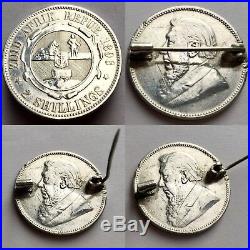
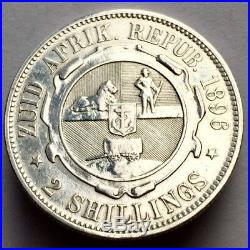
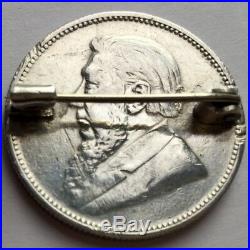
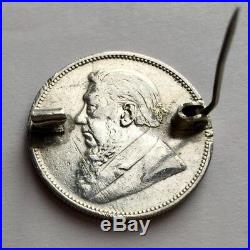
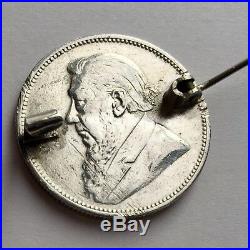
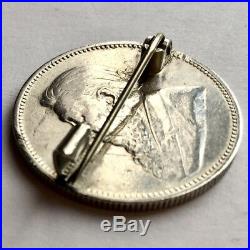
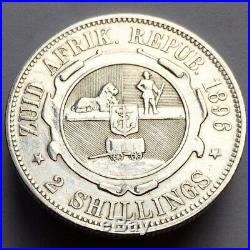

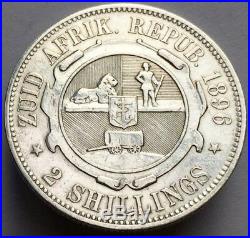
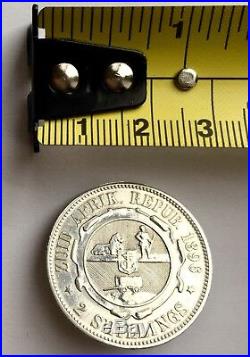
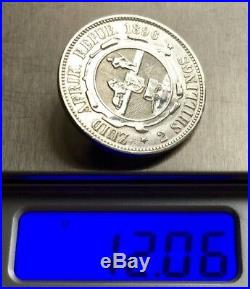
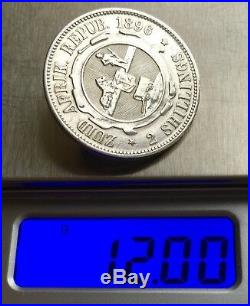

Rare Antique (1896) Zuid-Afrikaansche Republiek Solid 925 Sterling Silver 2 Shilling Coin Brooch / Lapel Pin. Please browse all 12 sets of photographs for size, weight and condition as they are self explanatory. Lovely 19th century Victorian coin with marvellous detail made in to a lapel pin. The South African Republic (Dutch: Zuid-Afrikaansche Republiek, ZAR), often referred to as the Transvaal and sometimes as the Republic of Transvaal, was an independent and internationally recognised country in Southern Africa from 1852 to 1902. The country defeated the British in what is often referred to as the First Boer War and remained independent until the end of the Second Boer War on 31 May 1902, when it was forced to surrender to the British. The territory of the ZAR became known after this war as the Transvaal Colony. After the outbreak of the First World War a small number of Boers staged the Maritz Rebellion by declaring the reinstatement of the South African Republic and aligned themselves with the Central Powers. The rebellion was put down by British forces in February 1915. The land area that was once the ZAR now comprises all or most of the provinces of Gauteng, Limpopo, Mpumalanga, and North West in the northeastern portion of the modern Republic of South Africa. Originally settled by the Dutch in the mid-1600s, South Africa eventually became a colony of Great Britain in 1806. In the 1830s South African farmers, called the Boers, migrated north to escape British rule. They established the Boer Republics of the Transvaal which consisted of the Zuid-Afrikaansche Republiek in 1852 and the Orange Free State in 1854. The result was the incorporation of the Boer republics under British rule. South Africa did not receive its independence from Great Britain until 1931. The Republic of South Africa, as we know it today, has existed since 1961. South Africa’s first official coinage came from the Zuid-Afrikaansche Republiek and whose monetary value was based on the Pound. Paul Kruger, third state president of the South African Republic from 1883 to 1900, appeared on the obverse of all coins struck between 1892 and 1900. Exceptions occurred in 1874 when the rare gold Pond (Pound) depicted President Thomas Francois Burgers who preceded Kruger. And in 1902 the obverse displayed the ZAR monogram, the symbol for the Zuid-Afrikaansche Republiek. South African Republic (SAR), Dutch: Zuid Afkikaansche Republiek (ZAR); also known as the Transvaal, 19th-century Boer state formed by Voortrekkers (Boer migrants from the British Cape Colony) in what is now northern South Africa. Its internationally recognized existence began with the Sand River Convention in 1852, when the British withdrew from the Southern African interior and recognized the independence of the Boer Voortrekkers north of the Vaal River. Owing to political divisions among the Boers, it was not until 1860 that the name South African Republic was applied to the amalgamated Boer republics in the area bounded by the Vaal, Hartz, and Limpopo rivers. The SAR was annexed by Britain in 1877 as the Crown Colony of the Transvaal in an abortive attempt to federate the white colonies of Southern Africa after the discovery of gold and diamonds in the region, but it resumed its independence in 1881 after a Boer rebellion led to the defeat of the British at the Battle of Majuba Hill (known as the First Boer War). In the aftermath of the discovery of large gold deposits on the Witwatersrand in 1886, the Boer republic again attracted the interest of the British, who, under a series of pretexts, attempted military conquest with the unsuccessful Jameson Raid (December 1895) and provoked the South African War (18991902; also known as the Second Boer War). After the British prevailed in 1900, the SAR was redesignated the Crown Colony of the Transvaal. In 1910 it was absorbed into the Union of South Africa as one of four white-dominated provinces. The name South African Republic is sometimes used to also refer to a Boer settlement established in the Potchefstroom area of the Transvaal by Voortrekkers in 1838. The item “Rare Zuid-Afrikaansche Republiek 1896 Sterling Silver 2 Shilling Coin Lapel Pin” is in sale since Thursday, August 30, 2018. This item is in the category “Coins\Coins\World\Africa”. The seller is “santoor-uk” and is located in Salford, Greater Manchester. This item can be shipped worldwide.
- Country: South Africa
- Year of Issue: 1896
- Collections/ Bulk Lots: No
- Country/Region of Manufacture: South Africa
